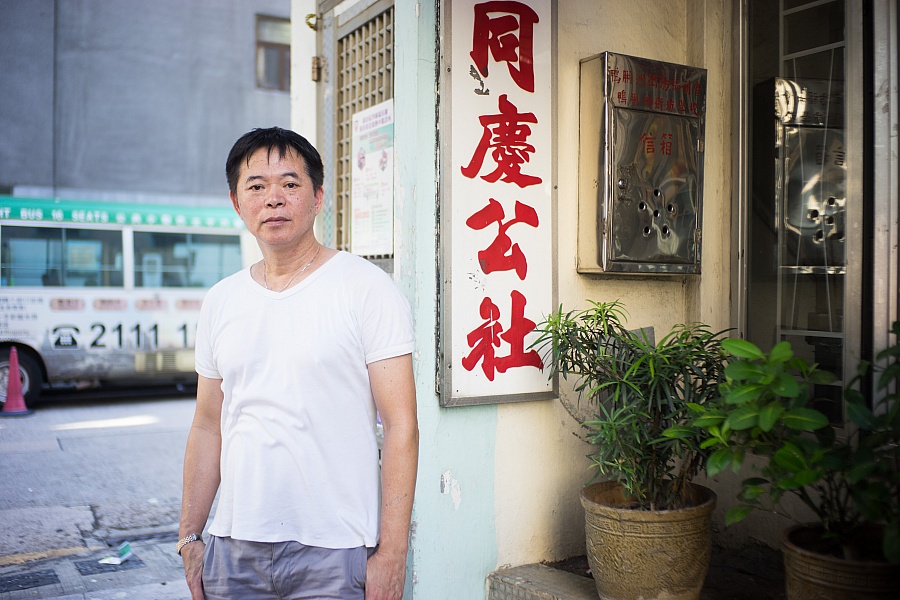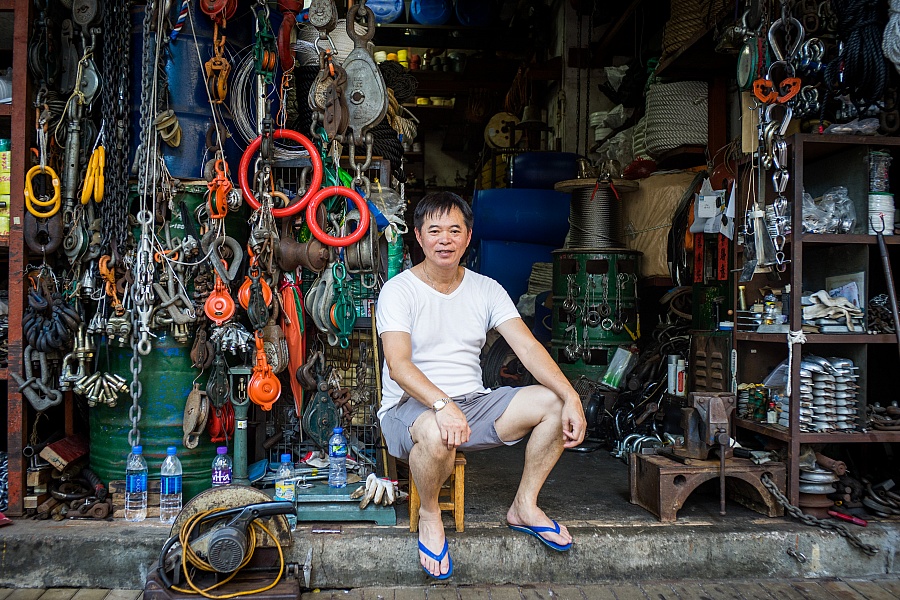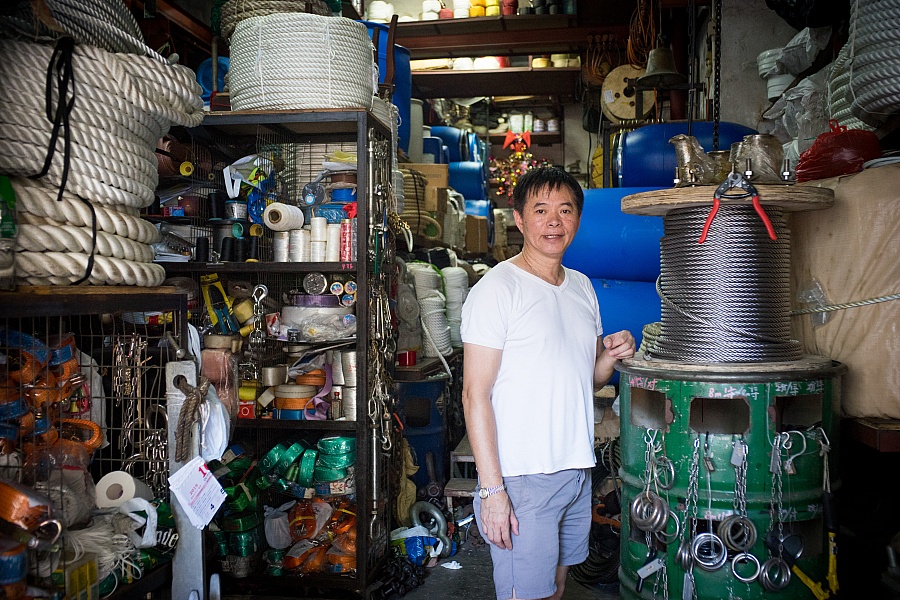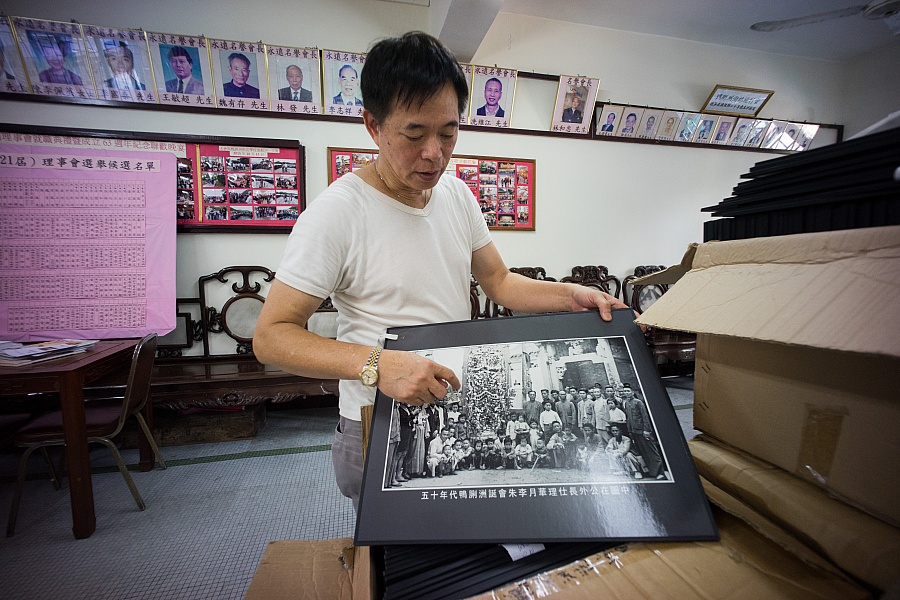TANG Kwok Ming
In his fifties
Executive member of Tung Hing Association
“The old Ap Lei Chau is a miniature Hong Kong. The island was a busy town for manufacturing and exports of noodles, soy sauce, and incense. Along the coastline were ship building and repair yards, machineries, and metal shops. When the goods from noodle manufacturers came on shore, the townspeople helped carry them barrel by barrel. They received pay for each barrel they carried.
Back then, earning money was only a question of physical work. Walking along the streets was our entertainment. Ap Lei Chau is divided into east and west. Main Street was in the middle; the streets were packed with wooden squatters, whereas the hills were packed with graves. Only the rich lived in their own flats.
My brothers, sisters and I had to help out in our early teens. Our family business started by selling bamboo sticks for fishing boats. Later on, my father began his ship-repairing business. We developed from the early “So Kee” into the larger “So Kee Ho” which sold a variety of boat equipment. My father usually worked in ship repairs, my mother helped out in So Kee Ho. We helped out whenever we can, doing whatever we could. I still remember how fishnets soaked in egg white were particularly tough and smooth.
We all grew up in the shipyards, so we understood how to fix and mend ships. The old craftsmen in Ap Lei Chau didn’t need design drawings. They could construct a ship from scratch. New fishing boats emerged in the 70s and 80s, and design drawings became more common. We also compiled materials for the Shipbuilding Display in the Wind Tower Park. One of the displays is a large millstone. A dozen workers spun the millstone in order to pull the ship on shore.
Because of the lack of consultation, there were many things wrong with the harbor front park. First, the park cut off the shipyards on the eastern and western shores. The shipyards on the west (in front of Ap Lei Chau Estate) are trapped by the park, nor is there a road to South Horizons. What happens if there is a fire? Second, the boat people are very concerned about fengshui. Yet, the ship installations in the park are either headed west, or crashing into the hills. For the boat people, heading west brings back luck. If you look towards the Aberdeen harbor from Ap Lei Chau Bridge, you see that most of the ships are headed towards you, i.e. the East. This is the result of years of fengshui.
The pair of fengshui pillars outside the Hung Shing Temple is also related to Tung Hing Association. The Hung Shing Temple has over 200 years of history*; whereas Tung Hing Association is founded to celebrate the Hung Shing Festival. According to the older generation, the Hung Shing Festival was originally managed by people from Chiuchow, Dong Guang, and other parts of Canton on a rotating basis. The Tung Hing Association was founded to celebrate the Festival on a collective basis.
Unfortunately, the fengshui pillar was destroyed by a typhoon in 2014. Tung Hing Association was also involved in its refurbishment. We needed a pair of original wood over 50 feet, because we had to increase the height of the fengshui pillars every time we mended it. In the end, we found our materials from Dong Guan. We finally wrapped up all the rituals, refurbishment, and work in around a year’s time.
The history of fengshui pillar is related to Warehouse (former Aberdeen Police Station) of today. Rumor has it that, after a plague, the people of Ap Lei Chau saw the former police station as bad auspices. The police station was like the mouth of a tiger threatening to consume Ap Lei Chau. The fengshui pillar was thus constructed. When the moon shined upon the pillars, their shadows were cast in the ocean like two fierce dragons. Ever since the pillars were constructed, Ap Lei Chau saw peaceful times.”
* The Hung Shing Temple was approximately built in the year 1773.










